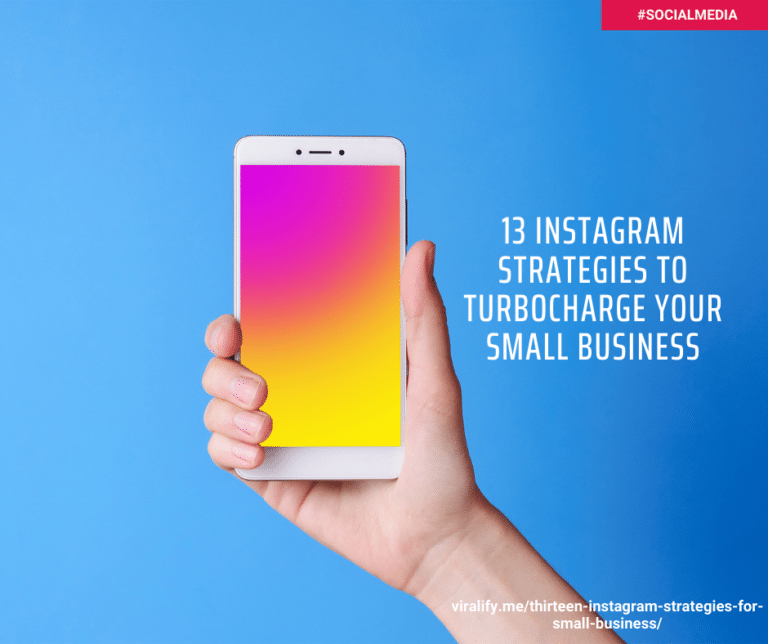Of the five human senses, sight undoubtedly has the most powerful effect on consumer perceptions. The famous Greek philosopher Aristotle indicated that all perceptions are triggered by witness. 83% of human beings use sight as the receiver to obtain messages among the five senses.
Human beings have a direct reaction to color and shape; hence, designers utilize color traits to enhance the sight memory of brands and improve the ability to identify brands Colors are embedded with messages and can trigger special reactions between the central nervous system and the cerebral cortex. The seven second color theory in marketing, proposed in the 1980’s in Europe, indicates that consumers experience their first impression of sight memory for products within 0.67 seconds. The first impression dominates 67% of the purchasing process which comes from colors. That is, humans memorize and recognize the color and shape of a product within seven seconds. 62% of people associate product brands via colors after watching a three-second advertisement .
Igloo Products Corporation used a color consultant to develop colored coolers and increased 15% of sales. A research from Loyola University (2007) in the US indicated that using colors to manifest critical messages enhances attention by 82% and brand recognition by 80%. Colors also create a positive image and 83% of businessmen believe that colors on a brand label result in successful business. In particular, the sense experiences (involving sensory perception) and visual effect of branding are extremely significant. The wrong use of color traits may deliver wrong messages from an enterprise perspective.
The Color Theory
Colors are formed by light, which is also a type of energy. Scientists have investigated that people experience psychological change when they are in contact with different colors. Colors can stimulate, excite, and form different emotions.
Each color results in various reactions. Color with a long wavelength has a stimulus effect; for example, red is a vivid color. A short wavelength of color has a comfort effect; for example, blue can reduce blood pressure and pulse. Orange indicates friendliness, pink represents softness, and grey specifies professionalism . In the research of human media interaction , Nijdam utilized certain color area theories to introduce color characteristics and emotions. In the first color theory, Goethe (1808) proposed the concept of a color circle that separates colors into positive and negative parts. Positive colors include yellow, orange, and red that represent conspicuous, vivid, and ambitious. Negative colors include blue and purple that represent obedient and admirable.
Shirley Willett’s color codification of emotions is the major foundation for interpreting the emotions of colors.
The outside circle includes positive traits, the second circle represents six emotions, and the inside circle indicates negative traits which presents depression. Colors symbolize abstract concepts and affect psychology and emotion. Each color has its positive and negative traits to influence human emotions.
Defining Brand identity
Most consumers treat brand and corporate name as the same concept.A brand has specific and individual meaning after a time-period.A strong brand needs an abundant and clear brand identity. Basically, brand identity represents the external image that the organization intends to present. Upshaw (1995) considered brand identity as the synthesis of text, image, intention, and customer perception of a brand.
Brand identity is determined by the perception of a receiver. Good brand identity transmits appropriate brand essentials to form a superior brand image and is composed of controllable elements of a company’s product or service; for instance, position, text, vision, and experience.
Brand identity provides visible value and creates company advantage. A brand needs visual conversion to symbol, color, font, and style, to be efficiently and correctly delivered to consumers. Different colors represent different emotions and affect consumer reactions; that is, brand color relates to brand personality.
Core value, the company’s commitment to its customers and employees, should be different from that of its competitors and should create value and trigger desires. Although it is the basis for a brand’s survival, core value is intangible and not always easy for people to identify. Ideal customer image drives brand traits through perceptions of similar values and beliefs between brands and customers. Emotional benefits mean that the brand causes positive responses from consumers, and functional benefits mean that the brand satisfies customer needs and solves their problems in differentiating products. Personality is a crucial element that makes brands significant and particular. Brand personality appeals to ideal consumers and builds solid relationships between brands and consumers. The base of authority refers to a competitor’s inability to imitate a firm’s personality and earn consumer trust through it. Finally, symbols guide people to generate images, establish brand identity, and build relationships with it.
Why is it important to have a corporate identity?
Corporate identity encompasses “visual identity,” which has traditionally been en associated with organizational symbols. Corporate visual identity consists of the corporate name, logotype and/or symbol, typography, and color. Although visual identity is an important aspect of corporate identity, it is only a component of corporate identity.
Everything an organization does makes and sells, and everything it says, writes down or displays, constructs its identity . According to psychology theory, people receive 70 % of their external messages from their visual sense; therefore color can be used effectively to Deliver a message about the corporate identity of the enterprise.
A symbol is a type of visual representation, which provides powerful differentiation of an enterprise. Communication represents the way a company delivers messages. Fair co m communication enhances competitive a d v anta g e of companies. Behavior derives from superior communication, which may result in a good corporate image and reputation.
What, a corporate brand anyways?
A Corporate brand is the visual, verbal, and behavioral expression of an organization’s unique business model. A brand is expressed through the company’s mission, core values, beliefs, communication, culture, and overall design.
Corporate brand audiences go beyond customers to include all stakeholders and that these audiences exercise a wider range of discriminators, including both intangible and tangible product/service elements. The concepts of intangibility and complexity highlighting the variety of contact points, or interfaces, between an organization and its stakeholder audiences.
Corporate branding delivers brand value, provides customer promise, furnishes differentiation for organizations with competitors, and increases loyalty.
“Sometimes we imagine colors as if they were living ideas, being of pure reason with which to communicate.” Paul Cézanne. Those words are true. Colors are used to communicate all kinds of ideas and feelings. They connect you to others.
Colors affect customer perception for corporate brand identity The color base of authority can trigger consumer brand awareness and shape brand image. Base of authority is difficult to imitate and connects trust and evaluation of a brand.
What Brand colors should you choose?
Blue and black are associated with trustworthiness. Red and yellow colors conform to emotional benefits and cause joyful feelings connected to happiness, hope, and passion. Conversely, red and yellow are closer to consumers compared to cool colors (such as green and blue) which may cause gaps for consumers. Colors affect customer perception of corporate brand recognition Ideal customer image indicates the way a brand provides value to generate sympathy.
However, consumers pursue their own ideal customer image which varies among genders or ages. For example, young male students prefer yellow and blue, and male office workers like black or gray, which is staidness. By contrast, young female students prefer cute pink and naive white and office ladies prefer colorful red or mystery purple.
Colors assist customers shaping corporate brand image and affect purchase motivation
Core value indicates the essentials and vision of brand value. Participants considered the appropriateness of using colors to convey the meaning and position of a brand. Consumers consider colors to represent the spirit of firms and convey messages such as culture, vision, or mission. In short, brand will gradually shape its own meaning of autonomy and uniqueness, which is brand identity (Kapferer, 1992).
Colors affect customer perception and emotion for the corporate brand traits
Colors influence human psychology and emotion. For instance, the change of warm to cold colors results in different feelings such as summer or winter. Colors result in consumer perception and cause emotional reaction. White brand to represent down-to-earth followed by the green brand. Green also conveys health. Meanwhile, white and green present honesty.Participants considered red, orange, and yellow to express cheerful emotions compared to green, blue, and purple.
In the second dimension, the red brand is considered a daring color.Red ,orange,and yellow mostly represented spirited feelings.
In the third dimension, blue and black are considered the most reliable colors. Blue and black also convey intelligence that reflects on most high-tech products (e.g., computer or mobile phone).
In the fourth dimension, blue, purple, and black represent an upper class. Red and purple were considered as charming brands among participants. As for the last dimension, green was associated with outdoor traits and black presents tough and powerful aspects.
In short, colors enhance brand traits and brand association in terms of specific attributes.
When it comes to your online presence, which includes your website and logo, you need to be very careful about the colors that you choose. The colors must serve as unspoken communication about what you and your business are and what you are trying to accomplish. If you don’t choose your brand colors wisely, it can ruin the credibility of your business and can devastate your business.
You want your colors to communicate peace and professionalism. If you don’t have colors in your branding that feel that way to other people, they won’t stay with you long enough to find out what you are offering and what you can do for them. The colors that you choose are as important as the words that you impart.
There are many questions that should come to mind as you are considering which colors you want for your business. Knowing to ask the right questions and being able to come up with answers to those questions will really help you to cement your business’s image.
- Should the colors of your website and of your logo be the same?
- What happens with the colors if you already have a website and add a logo later?
- In that case, should you change the website colors to match the logo once you have it in place or should you match your logo to your website?
It is important to have a cohesive and fluid idea when it comes to your web presence and colors. If you choose not to have the same color throughout, you must at least have colors that complement each other. If you create a website and a logo using the identical colors, you may have some difficulties later on. It is a good idea to do some extensive research before you choose your final colors. That research includes looking critically at several color combinations in the context of your web design, layout and colors. Remember that you need to keep your target audience in mind when considering colors for your brand. The colors that you choose will be on all of your branding and you need to be absolutely certain that you have chosen colors that make a statement about who you are and what your business represents.
Colors: what do they mean?
When choosing your brand colors, it is critical to understand what the colors mean and then you can appropriately choose the best colors to highlight your business and to attract people to your brand.
- Blue: Tranquility, acceptance, love, understanding, patience, cooperation, security, loyalty, and comfort
- Orange: Courage, confidence, friendliness, cheerfulness, warmth, excitement and energy
- Yellow: Caution, intelligence, brightness, joy and organization
- Purple: Royalty, religion and sophistication
- Green: Money, sharing, soothing, responsiveness, health, food, nature, growth and freshness
- Red: Strength, leadership, love
- Brown: Durability, earthiness, primitive
- White: Purity, ease, freshness, goodness and cleanliness
- Black: Dramatic, committed, classy and serious
The next thing that you need to do when it comes to choosing the colors for your brand is to figure out exactly how you and your business want to be perceived. People will see your brand and they will relate to it in a very personal way. People always react on an emotional level. If you are able to connect with them, they will be interested in learning more.
Conclusion
It is really fascinating to think that people react to many things in life (and business) on a subliminal level. People don’t realize that colors are chosen very carefully to invoke specific reactions. There is a true scientific approach to it but all people know is that it makes them feel a certain way.















